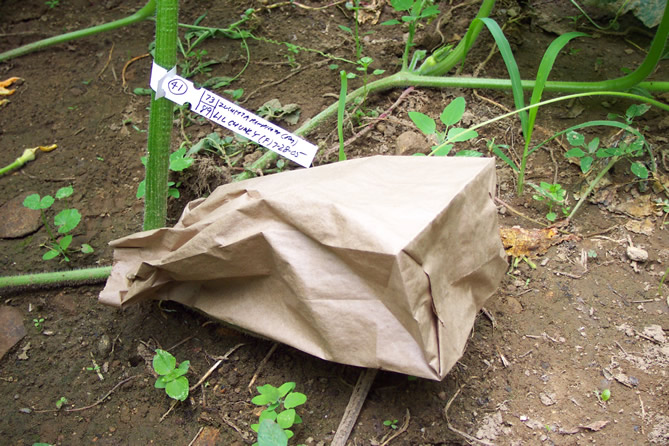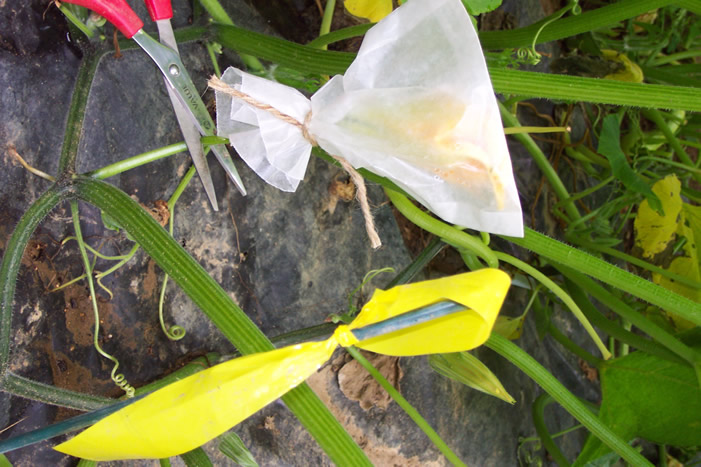
The following morning pollination begins. This pollination was done on a weekend so there was time to allow the
sun to rise to provide sufficient light for pictures.
First the male flower is picked using scissors. The male flower has attempted to open within the wax paper bag, and
will be shedding pollen. Care should be taken not to shake the flower so to minimize pollen loss from the stamen while
carrying the male flower to the location of the female flower.

The wax paper bag is carefully lifted off.
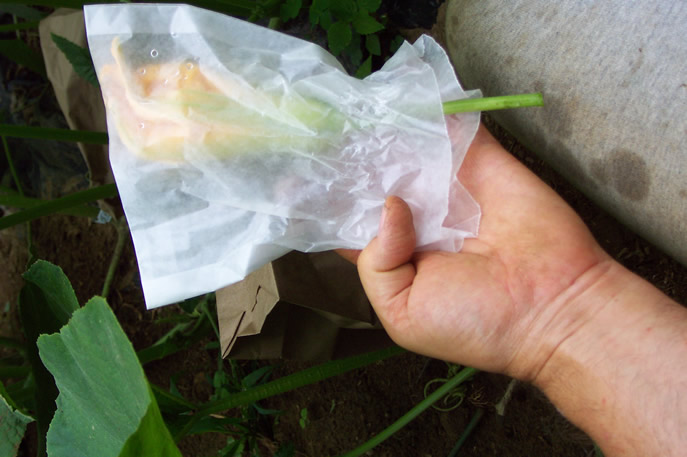
The male flower pops open.
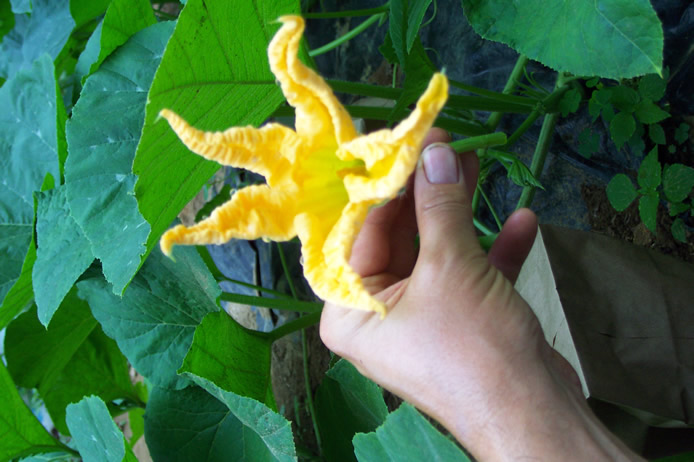
Carefully the flower portion is removed leaving just the male stamen bearing the pollen.
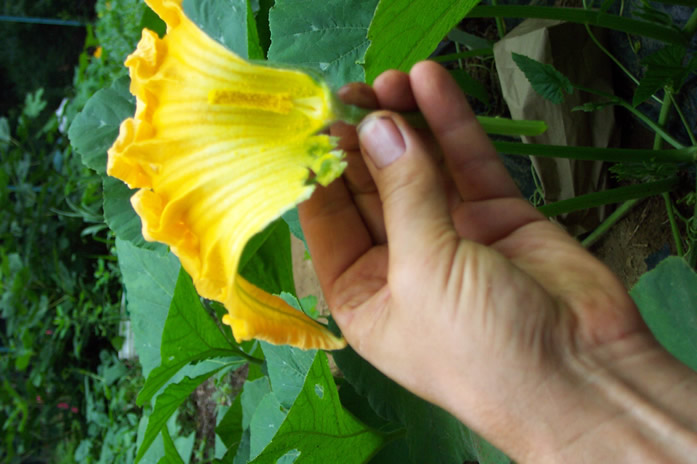
We are left with a male stamen laden with pollen that will pollinate the female flower. Without the bright orange petals
the honeybees usually ignore the stamen on a stalk.
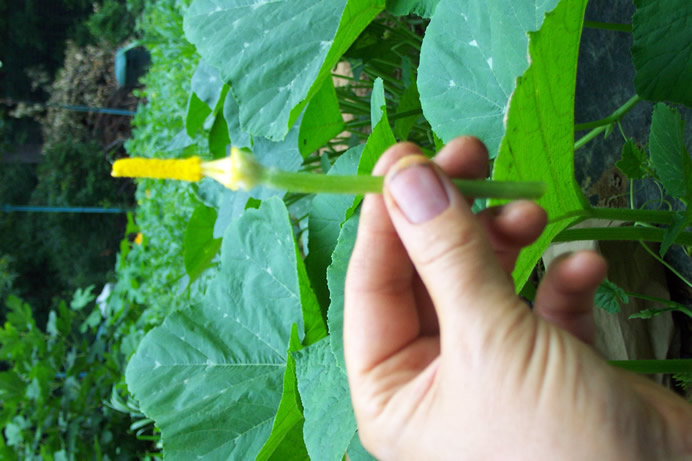
The outer part of the male flower is placed on a squash leaf above and near the bagged female flower before
removing the bag. The intent is to attract the swiftly flying honeybees long enough to wave them away from the female
flower we are attempting to pollinate.
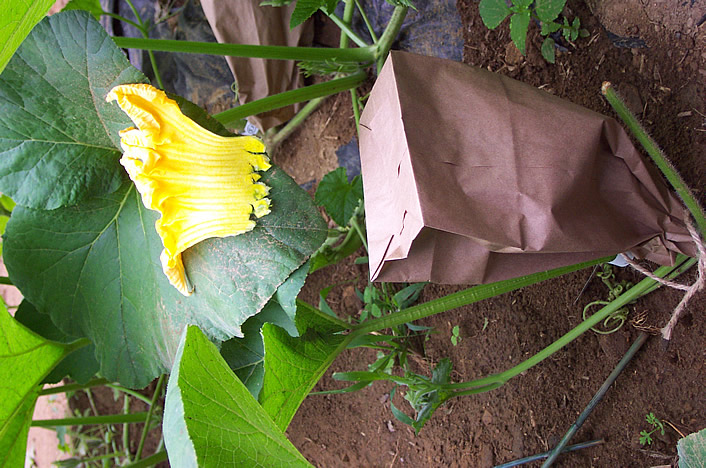
Carefully pull loose the string at the base of the bag sufficent to allow bag removal without untying it.
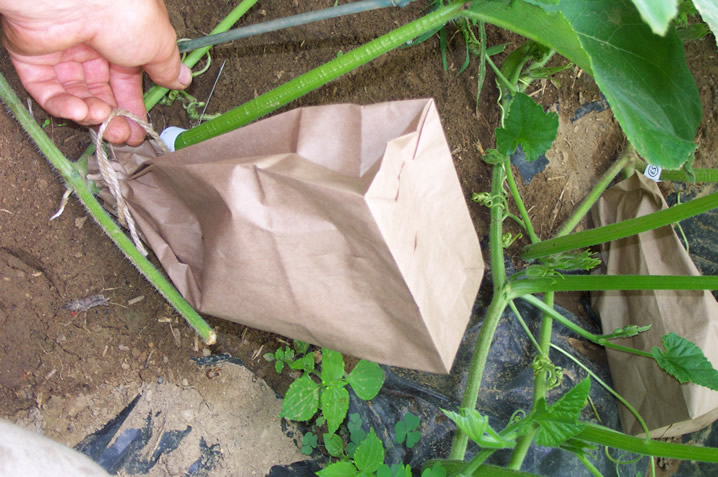
The paper bag is gently lifted off after listening for a lull in honeybee traffic. The next few steps should take no longer
than 15-20 seconds with practise to minimize risk of honeybee contamination.
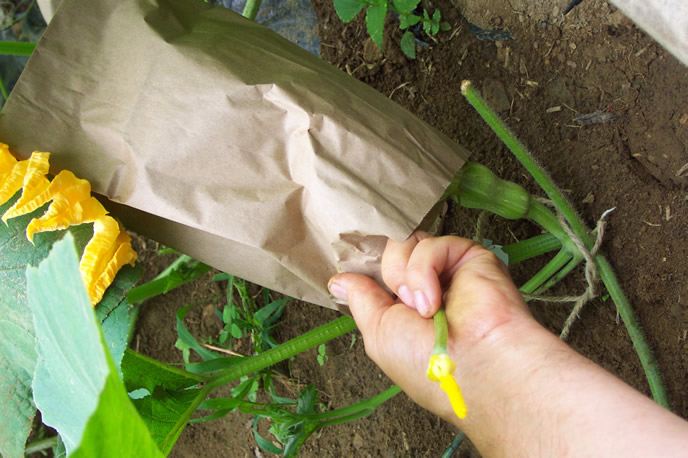
The female flower pops open. Be prepared to close the top of the flower with cupped hand to block access by
honeybees.
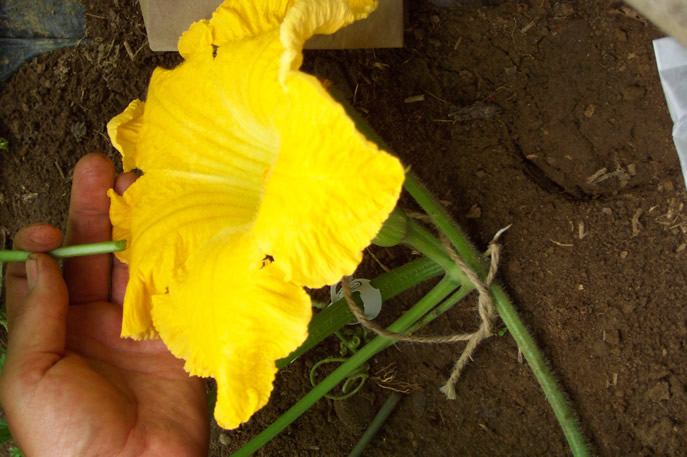
The goal is to coat the dark orange stigma as evenly as possible with the available pollen as quickly as possible,
listening for maurading honeybees. These usually can be waved off, put not always. They will fly from some distance
into a flower at full speed, and once inside the cross is no longer pure and must be abandoned.
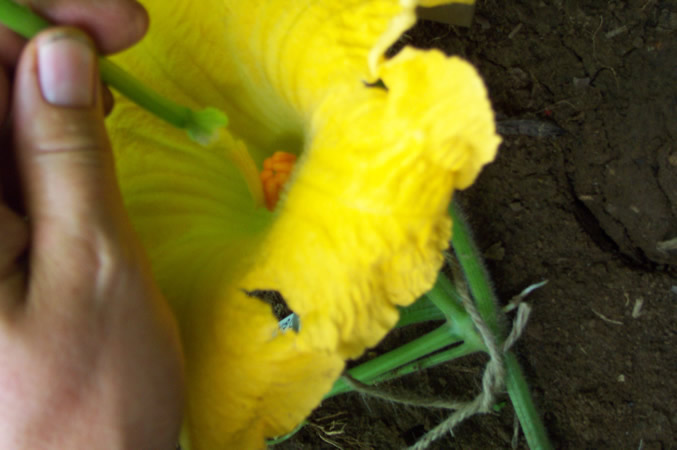
The female flower is now ready to be rebagged to keep out pollinating insects.
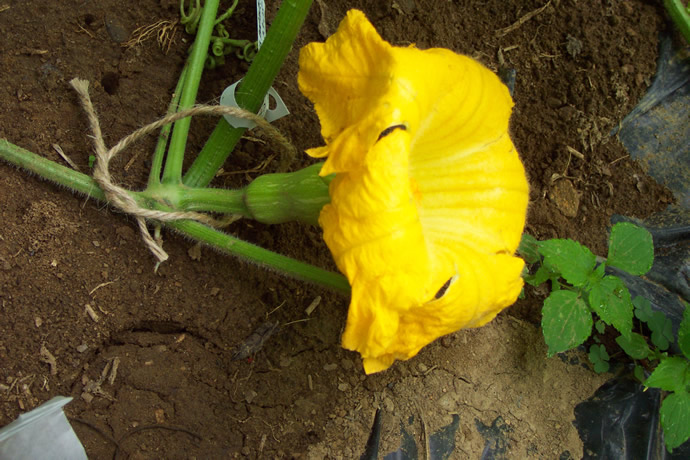
After pollination, the still tied string that held the bottom of the bag is lifted up around the female blossom past the
stigma to the point where the flower petals are flexible enough to be folded in to effectively seal out pollinating insects.
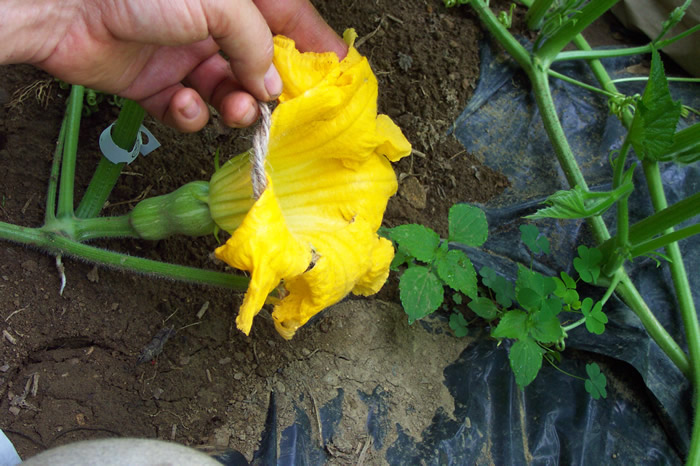
If you are lucky the flexible end of the flower will fold in and allow an insectproof seal. If not, the fallback is to securely
seal the paper bag over the imperfectly sealed female flower sufficiently well with string to stop honeybees.
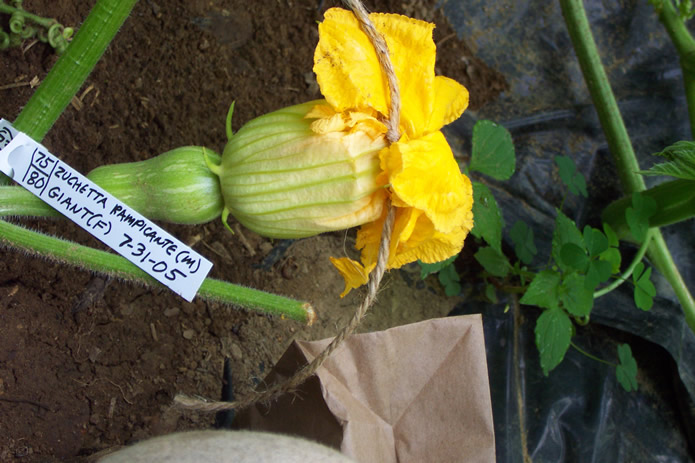
The paper bag is placed back over the female flower to block view of the female flower from polinating insects.
If the string knot is good, this is not necessary, but the bag is additional insurance that during the course of the day
a honeybee carrying pollen does not find its way into the flower. Out of sight is out of mind. If the flower petals were
not sealed by string the string must be placed back around the base of the bag. In these instances the developing
squash should be watched as some fast growing squash can be girdled by string in only three days.
